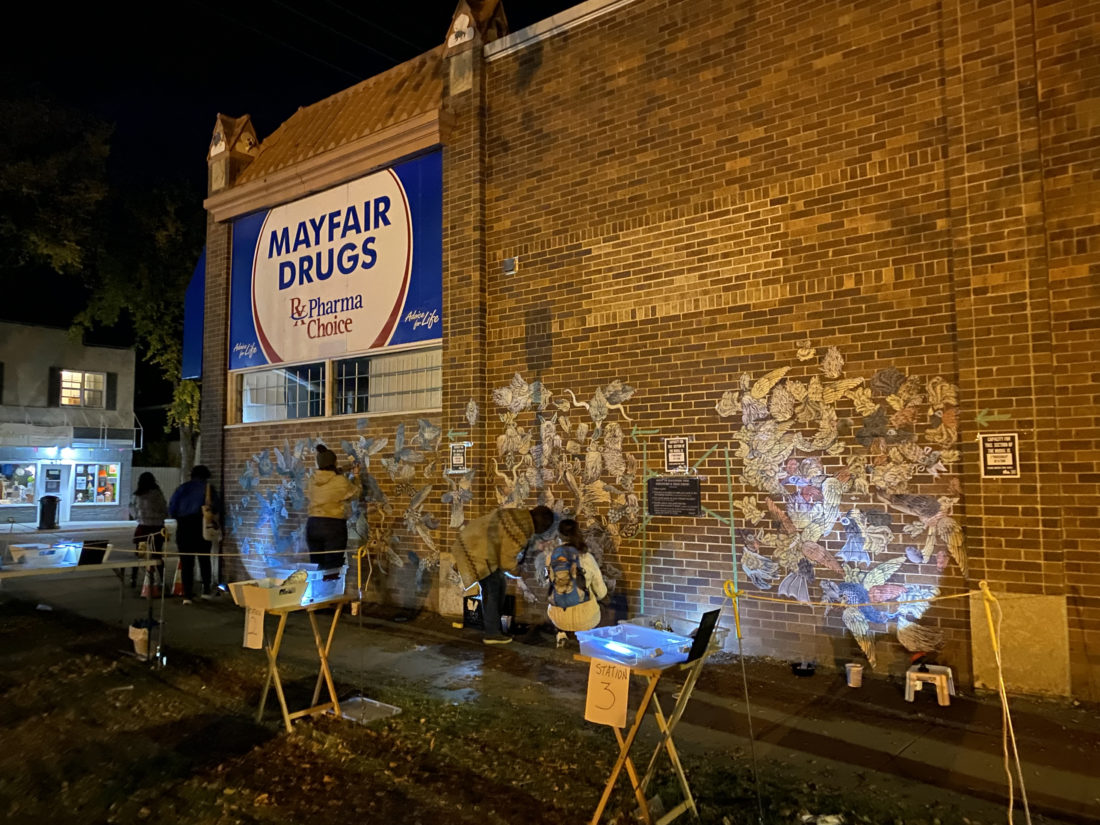
The evening of Sept. 25 saw Nuit Blanche host its first full festival since the COVID-19 pandemic began.
The event’s locations included interactive artworks and activities in the areas of Broadway, Downtown, Riversdale and 33rd Street West. Visitors at the festival had the chance to view augmented reality artworks, participate in collaborative art projects, watch music and dance performances and experience many other contemporary art forms.
Nuit Blanche has remained responsive to the COVID-19 pandemic in its operations since last year. The fall 2020 festival was cancelled, and in spring 2021, a scaled-back version called Winter’s End was held where new COVID-19 safety measures were tested.
“It was much smaller, it was much [more] scaled down,” Rachel Mackenzie, secretary of the Nuit Blanche board of directors, said. “We just wanted to see how we could do that with social distancing.”
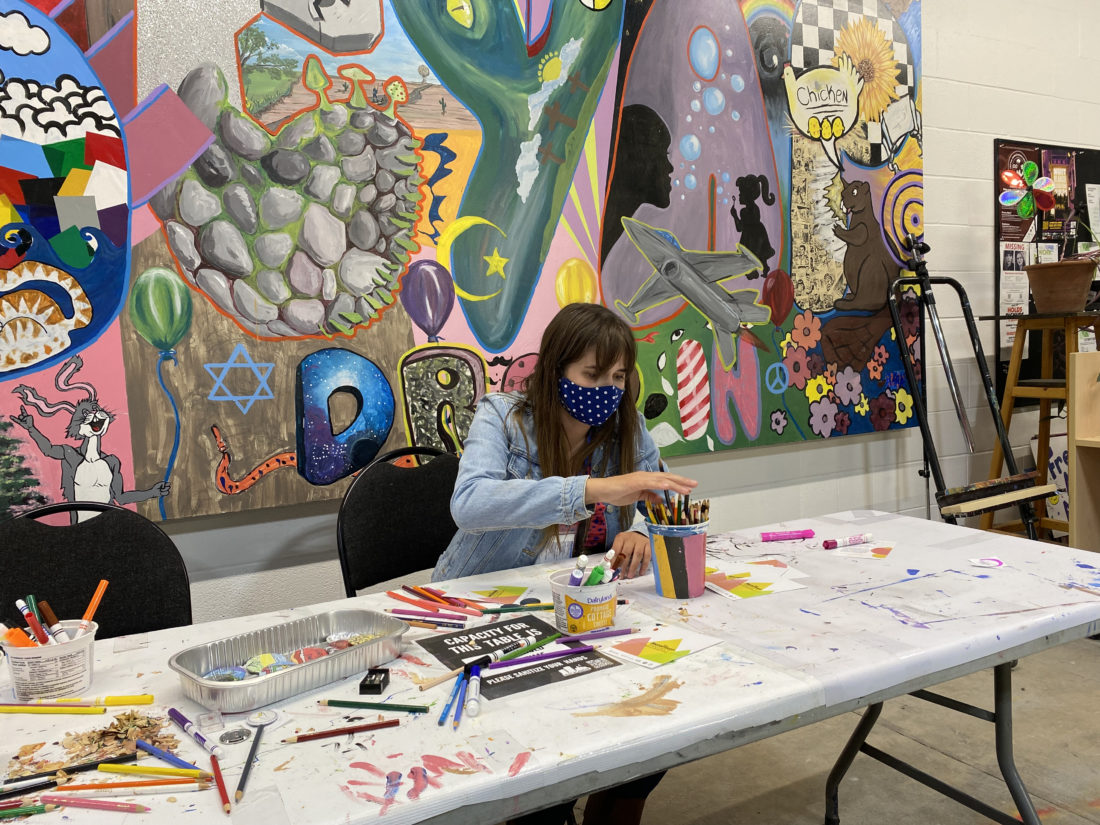
Despite new measures in place to reduce the risk of COVID-19 transmission, such as limited person capacities for indoor installations and greater distance between displays, Saturday’s Nuit Blanche brought many people out into the streets. And, while the spring event did have artworks on 33rd Street, this was the first time that the full Nuit Blanche festival has reached that far.
“The goal of Nuit Blanche always has been to let people from all sorts of different neighbourhoods explore the whole broad section of their city. Each year, we’ve tried to expand further and further,” Mackenzie said.
To facilitate movement between the event’s locations, bus transportation was made free for the evening.
“It’s quite a long way from the rest of the neighbourhoods that we’re in, so it’s kind of meeting that Nuit Blanche goal of being able to offer arts access across the city,” Mackenzie said.
One of the artworks on 33rd Street was a participatory wheat paste mural by Cate Francis entitled Cryptid Crossing. There, visitors had the opportunity to adhere prints of animal body parts, illustrated and silkscreened by Francis, onto the side of Mayfair Drugs to form a chimerical new creature.
“It lets people determine how it’ll end up and they get to choose their part and add it wherever they want,” Francis said.
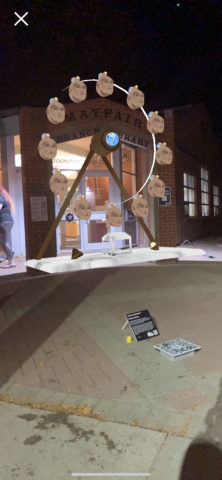
Another collaborative artwork on 33rd Street entitled Every Child Matters was designed by Métis artist April Doepker and displayed in the SCYAP centre. Using spray paint on canvas, Doepker depicted a child holding a sign that read “We Matter” to honour the lost children of residential schools. She enabled visitors to use paint pens to fill the background with their own messages and drawings of hope and solidarity. SCYAP says the piece will be displayed at various Saskatoon schools and libraries in the future.
Doepker said she chose to do this for awareness about the children who died at residential schools and to allow people to “say how they feel about this.”
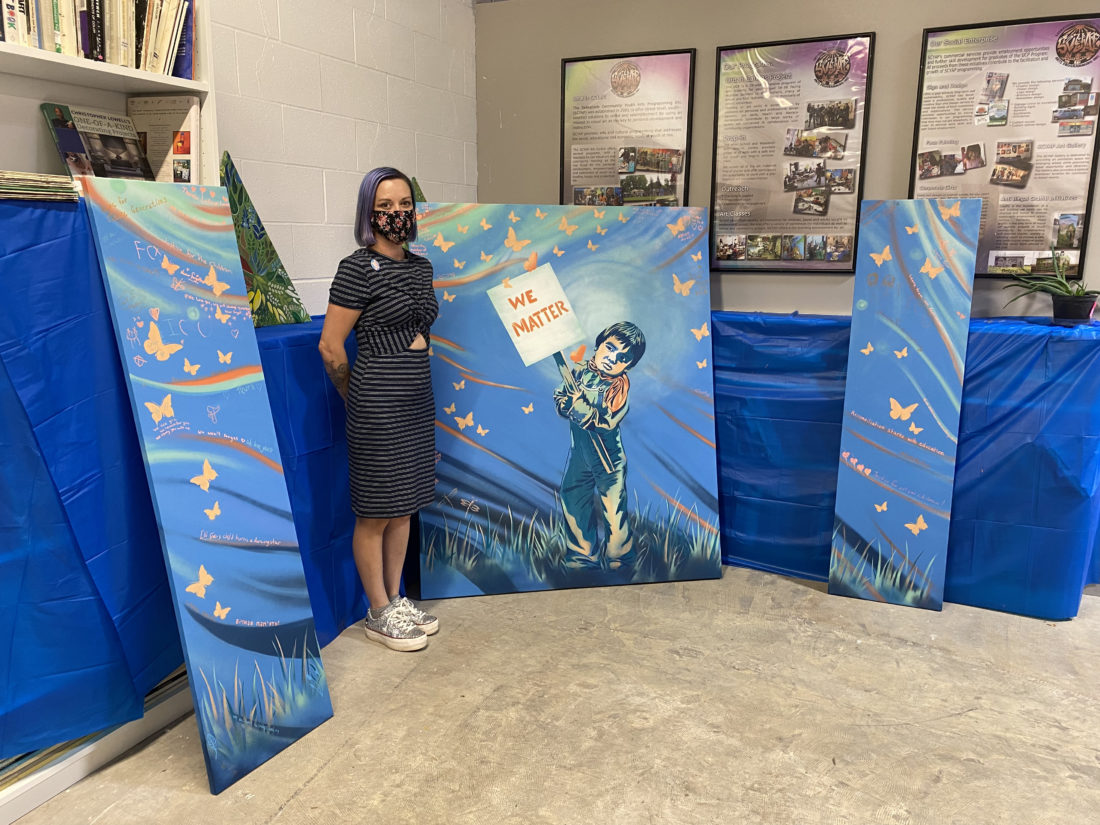
Concerns about maintaining COVID-19 safety protocols on the U of S campus prompted the cancellation of Nuit Blanche Eve on Friday, which was meant to give a preview of augmented reality artworks created by U of S students. However, these artworks were still viewable at the main event on Saturday.
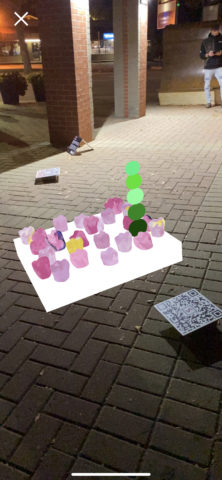
Mackenzie says that many people may shy away from conventional art spaces, such as galleries, because of cost barriers or apprehension about unwritten social rules of formal spaces. She says that Nuit Blanche allows people to experience art in a more relaxed setting.
“There’s a lot of people who may be a lot more open to enjoying art and experiencing art if they were in a space that’s a lot more casual and permissive and accessible,” Mackenzie said.
—
Sandra LeBlanc | News Editor
Photos: Sandra LeBlanc | News Editor